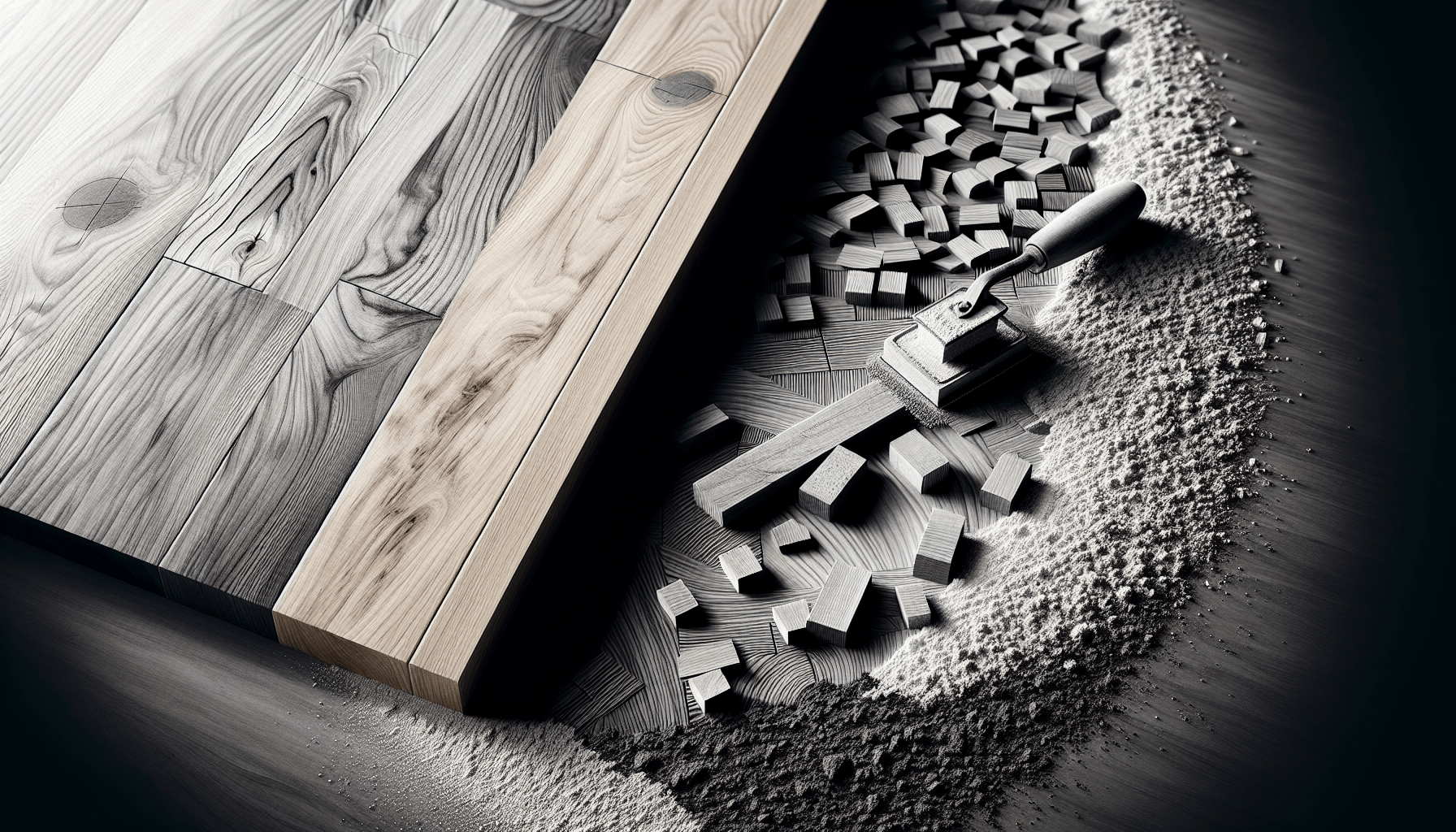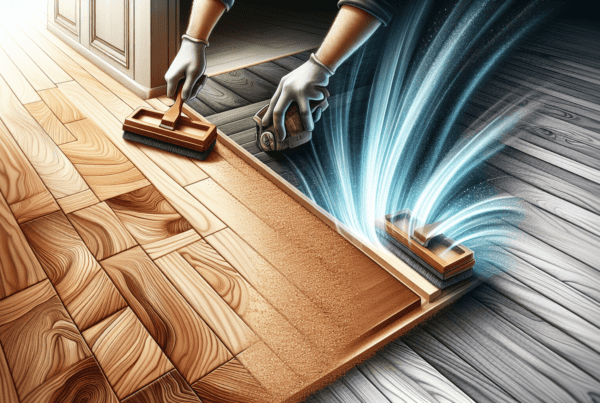In an era where the beauty and durability of a home’s flooring are paramount, mastering the art of timber floor sanding and finishing is an essential skill for any homeowner seeking to enhance their living space. Based in Wellington, our team takes great pride in offering top-quality services in this domain, ensuring that every flooring project we undertake is not only visually appealing but also stands the test of time. Let us share our journey into the world of timber floor sanding and finishing, showcasing how our dedication and expertise can transform your home.
Understanding Timber Floor Sanding and Finishing
When we think about revitalizing the look of our homes, often our gaze lands on the timber floors that ground our spaces. The processes of sanding and finishing these floors can breathe new life into them, but let’s delve into what these terms actually mean and why they’re so important.
Definition of Timber Floor Sanding
Timber floor sanding is a process we undertake to remove the top surfaces of a wooden floor by abrasive materials. It’s akin to erasing the tired exterior to reveal a fresher surface underneath. This process not only removes imperfections, stains, and old finish but also prepares the timber for a new coat of finish.
The Importance of Finishing in Timber Flooring
Finishing, in the context of timber flooring, is the application of a protective layer over the sanded floor. This layer can vary in composition, sheen, and thickness, but its primary role is to protect the wood from damage and wear, enhancing its natural beauty and increasing its lifespan.
Different Types of Timber Floor Finishes
There’s a delightful variety of finishes available, ranging from oils and waxes, which penetrate the wood to provide a natural look, to lacquers and varnishes that create a protective surface on top of the wood. Polyurethane, a popular choice, offers a durable and resistant finish suitable for high-traffic areas.
Benefits of Timber Floor Sanding and Finishing
Considering undertaking this process? Here are some compelling reasons why it’s a great idea.
Enhancing the Aesthetic Appeal
One of the most immediate benefits we notice after sanding and finishing our floors is the remarkable improvement in their appearance. This process highlights the wood’s natural beauty, restoring its luster and making it a centerpiece of our home’s decor.
Increasing the Longevity of Timber Floors
By removing the old, worn-out layers and applying a new finish, we effectively extend the life of our timber floors. This process protects the wood from future damage and wear, ensuring it remains vibrant and durable for years to come.
Improving Indoor Air Quality
Old, unfinished, or deteriorating floors can harbor dust, allergens, and other particles. Sanding and finishing these floors not only makes them easier to clean but also reduces the presence of these airborne nuisances, contributing to a healthier living environment.
Preparation for Sanding and Finishing
Before jumping into the process, some preparation is needed to ensure the best results.
Clearing the Space
First, we need to clear the room of furniture, carpets, and any other items. This not only facilitates easier access to the floor but also protects our belongings from dust and damage.
Assessing the Floor Condition
Next, we take a close look at the floor’s current condition, identifying any repairs or replacements that need to be made before the sanding process begins.
Selecting the Right Equipment
Choosing the right sanding tools is crucial. Depending on the size of our project and the condition of the floor, we might need a variety of sanders—from heavy-duty drum sanders for the initial sanding to hand-held orbital sanders for the finishing touches.
The Sanding Process
The sanding process involves several stages, each designed to progressively smooth the timber floor.
Initial Sanding with Coarse Grit
We start with a coarse-grit sandpaper to remove the old finish and any significant imperfections. This stage is about stripping away what’s not wanted, setting the stage for finer work.
Intermediate Sanding for Smoothing
After the rough initial sanding, we move to a medium-grit sandpaper. This step removes the scratches and imperfections left by the coarse grit, progressively smoothing the surface.
Final Sanding with Fine Grit
The final sanding pass, using fine-grit sandpaper, polishes the surface and prepares it for the finishing touches. This stage is what gives the floor its smooth, ready-for-finish feel.
Choosing the Right Finish for Your Floor
Now, it’s time to select the best finish to protect our beautifully sanded floors.
Types of Finishes Available
As mentioned, finishes range from penetrating oils and waxes to surface-sealing varnishes and polyurethanes. Each type has its advantages, depending on the look and level of protection we desire.
Factors to Consider When Choosing a Finish
When deciding on a finish, we must consider the floor’s intended use, the amount of foot traffic it receives, and our personal aesthetic preferences. Additionally, the ease of application and future maintenance requirements play a part in our choice.
Popular Finish Trends in Wellington
In Wellington, we’ve noticed a preference for natural, matte finishes that highlight the timber’s raw beauty. Water-based polyurethanes, with their low odor and quick drying times, are particularly popular for their eco-friendly properties and durable finish.
The Finishing Process
Applying the finish correctly is just as important as the sanding process.
Application of the Chosen Finish
Following the manufacturer’s instructions, we apply the finish evenly across the floor, using appropriate tools such as brushes or rollers. Ensuring a smooth, even coat is key to a beautiful result.
Drying and Curing Times
Each type of finish has its specific drying and curing times, which can range from a few hours to several days. During this period, it’s important to keep the room well-ventilated and free from foot traffic.
Applying Multiple Coats
For added protection and durability, multiple coats of finish may be necessary. In between coats, light sanding ensures that each layer adheres well and contributes to a smooth, lasting finish.
Maintenance Tips Post Sanding and Finishing
To keep our newly refreshed floors looking their best, regular maintenance is crucial.
Regular Cleaning Techniques
Dust and clean the floors regularly using recommended cleaning products and methods suited to the type of finish. Avoid water and harsh chemicals that can damage the finish.
Dealing with Scratches and Dents
For minor scratches, we can often repair them ourselves using touch-up kits or by lightly sanding and reapplying finish. Deeper dents and scratches might require professional attention.
Reapplication of Finish When Necessary
Over time, the finish may wear down, especially in high-traffic areas. A new coat of finish can restore the floor’s protection and beauty, extending its life even further.
Top Quality Service Providers in Wellington
For those of us in Wellington seeking top-quality timber floor sanding and finishing services, there are a few things to keep in mind.
Criteria for Selecting a Service Provider
When choosing a service provider, we look for experience, reputation, and the quality of their previous work. Additionally, transparency regarding costs and timelines is crucial.
Recommended Timber Floor Specialists
There are several highly recommended timber floor specialists in Wellington known for their craftsmanship and customer service. It’s worth doing some research and asking for referrals to find the best fit for our needs.
What to Expect in Terms of Costs
The cost of sanding and finishing a timber floor can vary widely depending on the floor’s condition, the size of the area, and the type of finish desired. Getting several quotes can help us understand the potential investment required.
DIY vs. Professional Services
Pros and Cons of DIY Sanding and Finishing
Taking on this project ourselves can be rewarding and cost-effective. However, it requires time, effort, and the right equipment. There’s also a risk of damaging the floor if we’re not experienced.
When to Hire a Professional
For those of us seeking a flawless finish or dealing with a significantly damaged floor, hiring a professional is the best choice. Their expertise ensures the job is done right, saving time and potentially costly mistakes.
The Value Brought by Professional Services
Investing in professional sanding and finishing services guarantees a beautiful and durable finish, while also providing peace of mind knowing that experts are handling our valuable floors.
Conclusion
Summary of Key Points
Timber floor sanding and finishing are valuable processes that restore beauty and functionality to our floors. Understanding the steps, choosing the right finish, and maintaining the floors post-process ensures their longevity and enhances our homes.
Final Thoughts on Enhancing Your Timber Floors
Revitalizing our timber floors can transform our living spaces, creating a warm, inviting, and healthy environment for us and our families.
Call to Action for Readers Seeking Top Quality Services in Wellington
For those of us in Wellington, considering a professional for your timber floor sanding and finishing needs means choosing quality and expertise. Research, ask for referrals, and select a service provider that meets your standards to ensure your floors look their best for years to come.







